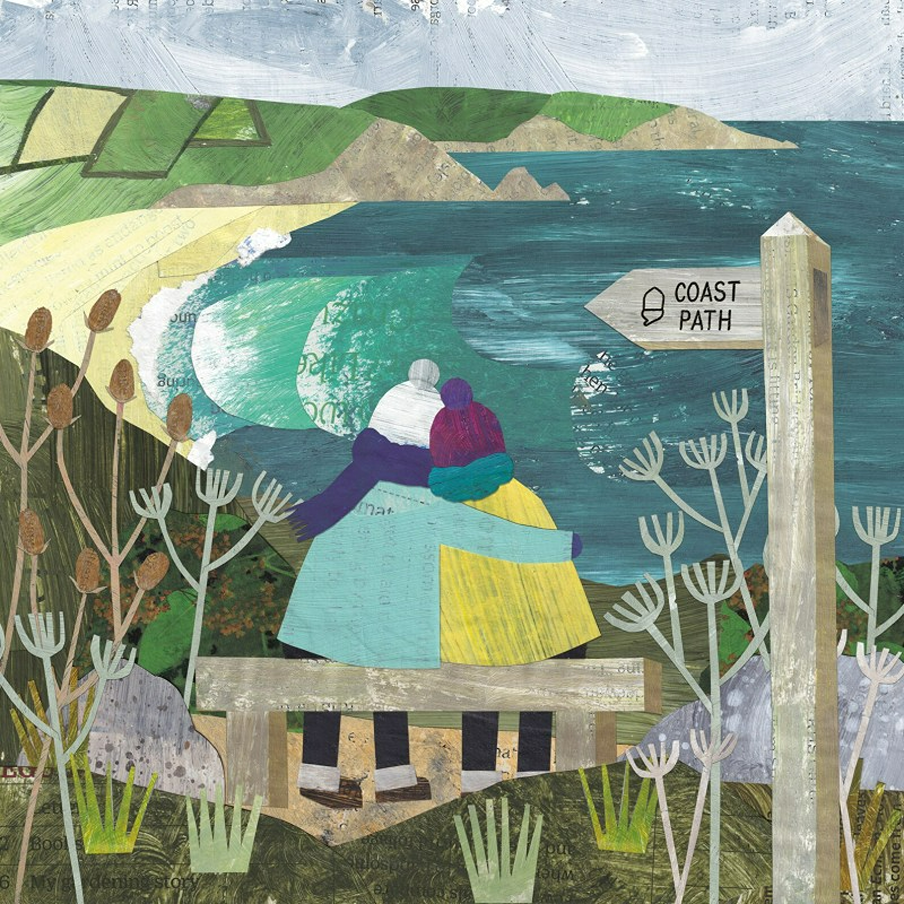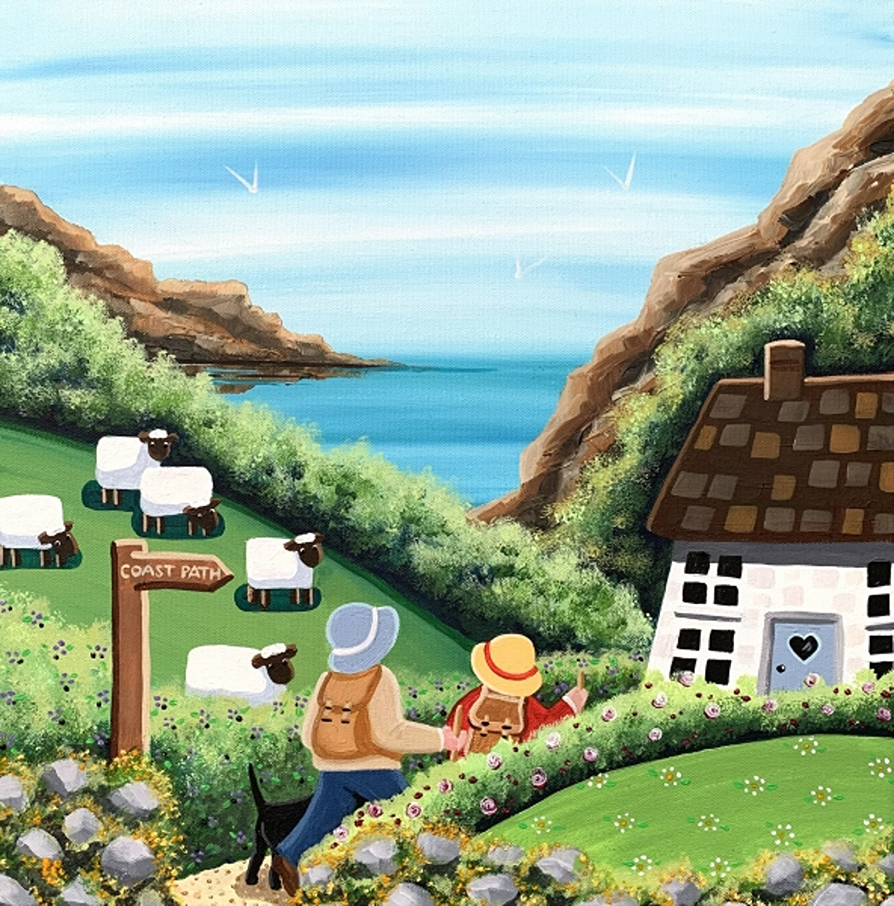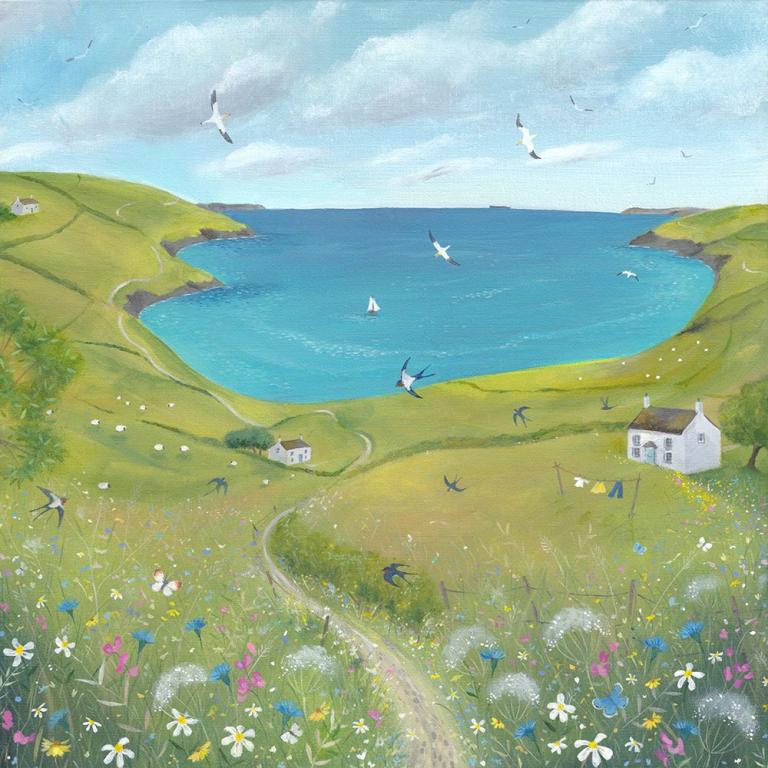England is surrounded by coast, so it makes sense that there are several coast paths that you can walk. You can just walk a section, or take an entire holiday and walk one over a few weeks.
You could book your own accommodation using sites like Snaptrip. For those watching the pennies, YHA hostels are set in lovely grounds with communal kitchens, and dorms or private rooms from £30 to £60 a night – some even have dog-friendly secure Landpods.
Remember to take phone numbers (if concerned for farm animals or wildlife). Check tide times, and avoid walking at night or in bad weather (check at The Met Office and mountainforecast).
If taking fit young dogs for some of the route, good tour companies filter for suitable accommodation.
Read this book on dog safety (includes a simple first aid guide). Read The Essential Guide to Hiking with Dogs for tips by Jen Sotolongo.
Safety Tips for Walking Coastal Paths
- Follow the Countryside Code, to keep all creatures safe.
- Carry a map, and let others know where you are.
- Check for dog beach bans (never leave dogs in hot or warm cars, opening the window in shady areas does not protect).
- Wear good walking shoes, with a light backpack for water and snacks and a waterproof jacket.
- Don’t walk on sand dunes (to protect birds and native wildlife). For stranded wildlife, call British Divers Marine Life Rescue.
- Keep dogs away from cliffs and seaweed. Also be aware of uncapped mine shafts, ticks and palm oil (white waxy lumps).
- Keep dogs away from jellyfish. If your dog is stung, rinse area with sea water, remove tentacles/barbs and seek immediate vet advice. Read more on keeping dogs safe by the seaside.
- Keep dogs away from seals (pups often are hidden in sand dunes), coastal birds and flowers (many are toxic, including to humans).
St Bees to Robin Hood’s Bay: The Coast to Coast Walk

Alfred Wainwright’s Coast-to-Coast Walk lets you cross northern England from the Irish Sea to the North Sea. The journey begins on the pebble beach of St Bees, where tradition says you dip a toe in the water before setting off.
Rolling green fields soon give way to the dramatic hills of the Lake District, and after crossing Yorkshire’s wild moors, you finish on the cobbled streets of Robin Hood’s Bay. And dip your toes in the water there!
The Herdwick sheep of the lakes soon give way to the curly-horned Swaledales as you move on. It’s a small change, but it marks your progress. There’s a train stop at St Bees. When you reach Robin Hood’s Bay, Whitby and its cosy cafés are a short bus or taxi ride away.
Alfred was a fell guide writer, who took a pay drop to move the Lake District. After an unhappy first marriage, he married the love of his life (on condition that she walked several paces behind him, and didn’t talk on their walks!)
It seemed to work, as they remained blissfully happy until he died of natural causes, at a ripe old age.
Contours has accommodation (look for the pawprint icon for dog-friendly trails – you can book just part of the walk). Mickledore offers part-of-the-walk holidays too, but not everywhere is dog-friendly.
The Coast to Coast Path is the official 2024 guidebook. It features maps and route planners, plus details on places to stay and camp, plus local pubs. Or go for the older but more interesting guide by Alfred himself, with pictures (updated regularly).
You can report damaged paths or overgrown hedgerows. Alfred was extremely fond of nature and wildlife, and donated profits from his books to animal charities. A local animal shelter is even named after him.
Cleveland Way: Filey to Saltburn
The Cleveland Way starts at Filey Brigg and soon reaches the clifftops where you get sweeping views over the North Sea. Medieval Whitby and its famous abbey greet you halfway, while Robin Hood’s Bay offers a labyrinth of steep lanes and old smugglers’ cottages.
The Cleveland Way mixes dramatic moorland with bold coastal scenery. Chalk cliffs, sandy bays and endless horizons keep the walking interesting, while tea rooms, historic inns and friendly B&Bs bring rest and warmth.
South Downs Way: Eastbourne to Winchester
Beginning at the white cliffs of Eastbourne, the South Downs Way runs 100 miles to Winchester, crossing the rolling chalk hills of southern England.
The coastline stretch is brief but unforgettable, with the famed Seven Sisters cliffs forming a wave of white chalk edges that drop to the sea.
Meadows dotted with wildflowers, ancient dew ponds and picture-book villages make this a favourite among history lovers and nature seekers alike. The early sections pack in sea views and salt-laden breezes, before the path winds inland to the ancient city of Winchester.
Northumberland Coast Path: Cresswell to Berwick-upon-Tweed

The Northumberland Coast Path goes for 62 miles from Berwick in the north to Cresswell in the south. The walk also takes in Seahouses, which faces out to the Farne Islands.. It’s mostly flat.
Offshore, seabirds wheel over the Farne Islands (no dogs allowed due to wildlife) while Bamburgh Castle stands bold against the endless sands. There’s a timeless feel to this part of England, with small harbours, quiet paths and wide open space all the way to Berwick-upon-Tweed.
If walking to Lindisfarne, set off 2 hours before low tide (walk with the outgoing, rather than rising tide) for 3 miles and don’t walk in poor weather or dusk, and wear good boots.
Most people simply use the hopper bus for this section, and begin walking again on the other side.
South West Coast Path: Minehead to Poole

The South West Coast Path unfurls for 630 miles, making it England’s longest national trail. Starting at Minehead in Somerset, the route hugs the coast through Devon and Cornwall, then into Dorset, ending in Poole.
You’ll pass wild moorland, secluded coves, colourful harbours and windswept cliffs. Look for fossils on the Jurassic Coast, and watch for dolphins or seals if you’re lucky. Many walkers choose to tackle this route in sections, with each stretch revealing new seascapes and wildlife.
England Coast Path: Connecting it All
King Charles III England Coast Path is the longest coastal path in the world, to weave through 15 National Parks and National Landscapes, with dramatically changing scenery. The trail is opening in sections:
- North West is from the Scottish border at Gretna Green. It stretches to the Chester and Welsh border, passing through the Lake District to Liverpool and Blackpool.
- North East is from the Scottish border above Berwick, to seaside holiday resorts. Passing sheltered coves and cliffs, and seabird colonies.
- East is from the Wash to the Thames Estuary, exploring sand dunes (don’t walk on them), market towns and villages and stunning seascapes.
- South East stretches from the Thames Estuary to Bournemouth, a huge stretch of coast, plus empty beaches and nature reserves.
- South West is from the Welsh border at Chepstow to Bournemouth, along dramatic coastlines. It links coastal resorts, towns and villages, plus piers, promenades and estuaries.
Norfolk Coast Path: Hunstanton to Sea Palling
The Norfolk Coast Path offers tidal marshes, sandy beaches and big Norfolk skies. Starting from the cliffs at Hunstanton, this waymarked route travels through this Natural Landscape.
The flat, soft paths make it one of England’s easiest long walks, while seaside towns like Wells-next-the-Sea and Cromer add classic English charm. Birdwatchers flock to Blakeney Point and Cley Marshes, where grey seals and rare birds gather. Quiet villages and long stretches of sand make it perfect for a gentle ramble or family outing.
The Peddars Way starts at at Suffolk (near Thetford) and follows the route for 49 miles to Holme-next-the-Sea on the North Norfolk Coast.







